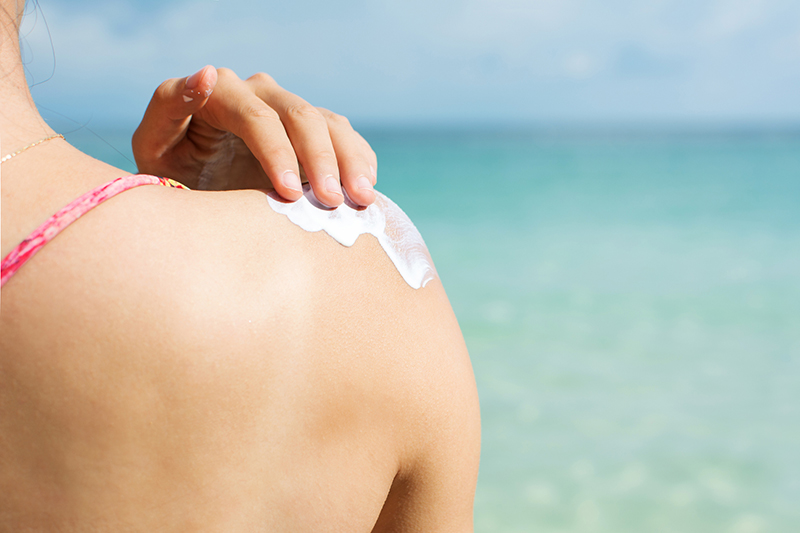Experts react to sunscreen found in bloodstream

A study published this month in the Journal of the American Medical Association (JAMA) revealed that several active ingredients in popular sunscreens are found elevated in the blood under maximum recommended use conditions. In the attention that resulted, the question arose as to whether this systemic exposure could be harmful. Edward Prodonavic, MD, Assistant Professor of Dermatology at EVMS, breaks down what the study and what it shows in the study results.
“We do know that ultraviolet rays damage collagen fibers, accelerate aging of the skin, and increase the risk of skin cancers,” Dr. Prodovanic says. “More people are diagnosed with skin cancer each year in the U.S. than all other cancers combined. According to the Skin Cancer Foundation, an estimated 7,230 people will die of melanoma in 2019, and more than one million cases of squamous cell carcinoma are diagnosed in the U.S. each year, resulting in more than 15,000 deaths.”
In explaining how sunscreens prevent skin damage from UV rays, Dr. Prodovanic says that physical blockers, such as zinc oxide and titanium dioxide, have been deemed safe by the U.S. Food and Drug Administration because both have shown extremely low systemic penetration. When applied, he explains, they reflect the UV rays off the skin. The downside of these products is that they can leave a cosmetically unappealing whitish film on the skin.
“Conversely,” he says “little is known about the systemic exposure of many chemical sunscreen ingredients, except for oxybenzone that has been detected in human breast milk and blood in some previous studies. Therefore, the FDA decided that in order for sunscreen companies to avoid safety testing of the chemicals in their products, no more than 0.5 ng/mL of the active ingredients could be absorbed into the body.” The plasma threshold of 0.5 ng/mL, he says, is based on the principle that at this level, the carcinogenic risk of any unknown compound would be less than one in 100,000 after a single dose.
In the study published in JAMA, 24 healthy participants were selected and application of four commercially available sunscreen formulations (two different sprays, a lotion, and a cream) containing active sunscreen ingredients (avobenzone, oxybenzone, octocrylene, and ecamsule) were applied under maximal use conditions, i.e., to 75% of body surface area four times per day for four days. Study participants were to remain in the clinic for up to seven days and were not exposed to direct sunlight during the study. Thirty blood samples were collected over seven days from each participant. When the researchers analyzed the amount of these chemicals in the blood samples, they all exceeded the threshold established by the FDA, with oxybenzone at levels above 20ng/mL on day seven of the study.
“Though the results showed elevated plasma concentrations of these chemical sunscreens,” Dr. Prodovanic says, “the study does not prove that they are harmful or unsafe. These results also do not assert that individuals should refrain from protecting against the sun’s UV radiation. There are other measures individuals can utilize if they prefer to avoid chemical sunscreens, such as using physical blockers, avoiding peak hours of the sun, wearing sun protective clothing and sunglasses, and staying in the shade.”
The researchers do point out, he adds, that the study was conducted in indoor conditions without exposure to heat, sunlight and humidity.
“This may have affected the rate of absorption of active sunscreen ingredients. Subsequent studies will be needed to evaluate the clinical significance of these findings and determine whether there are true health risks to the absorption of these ingredients, in adults as well as in children whose skin may absorb substances differently.”